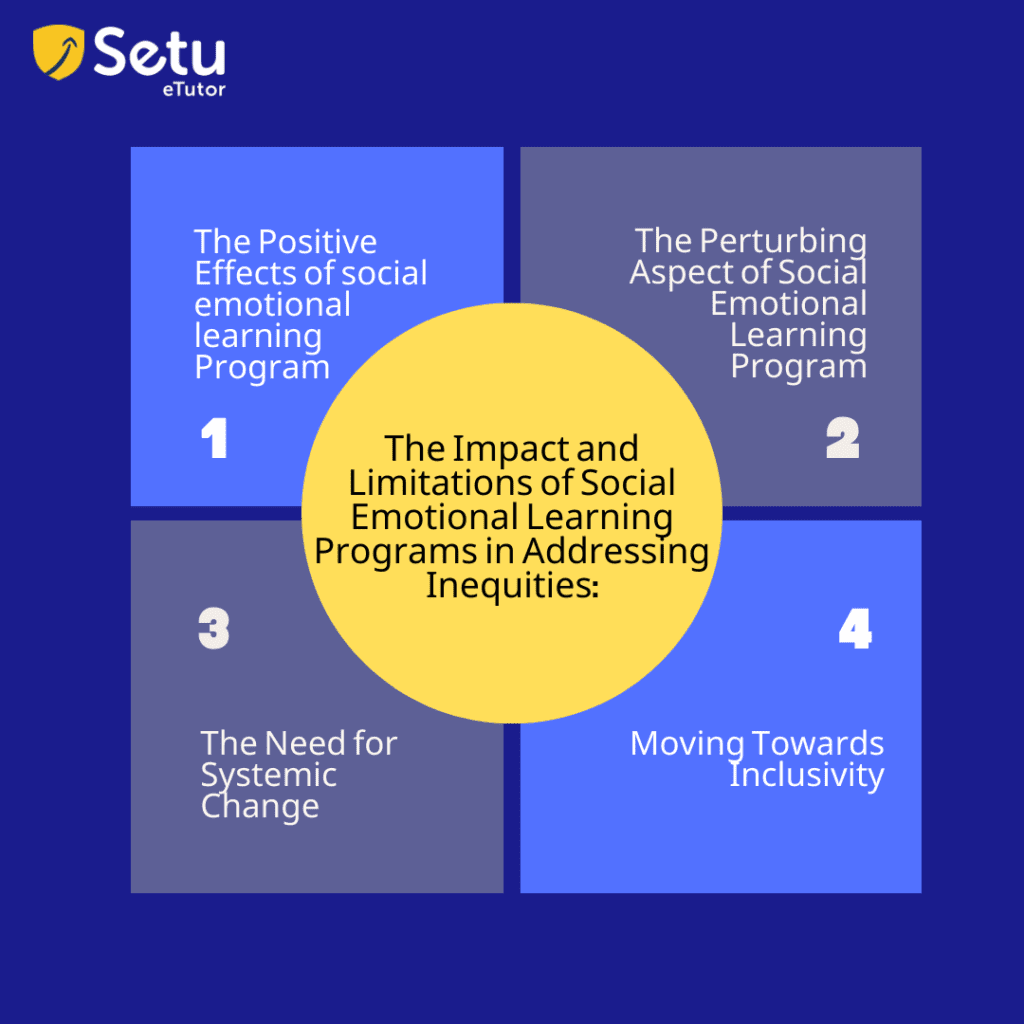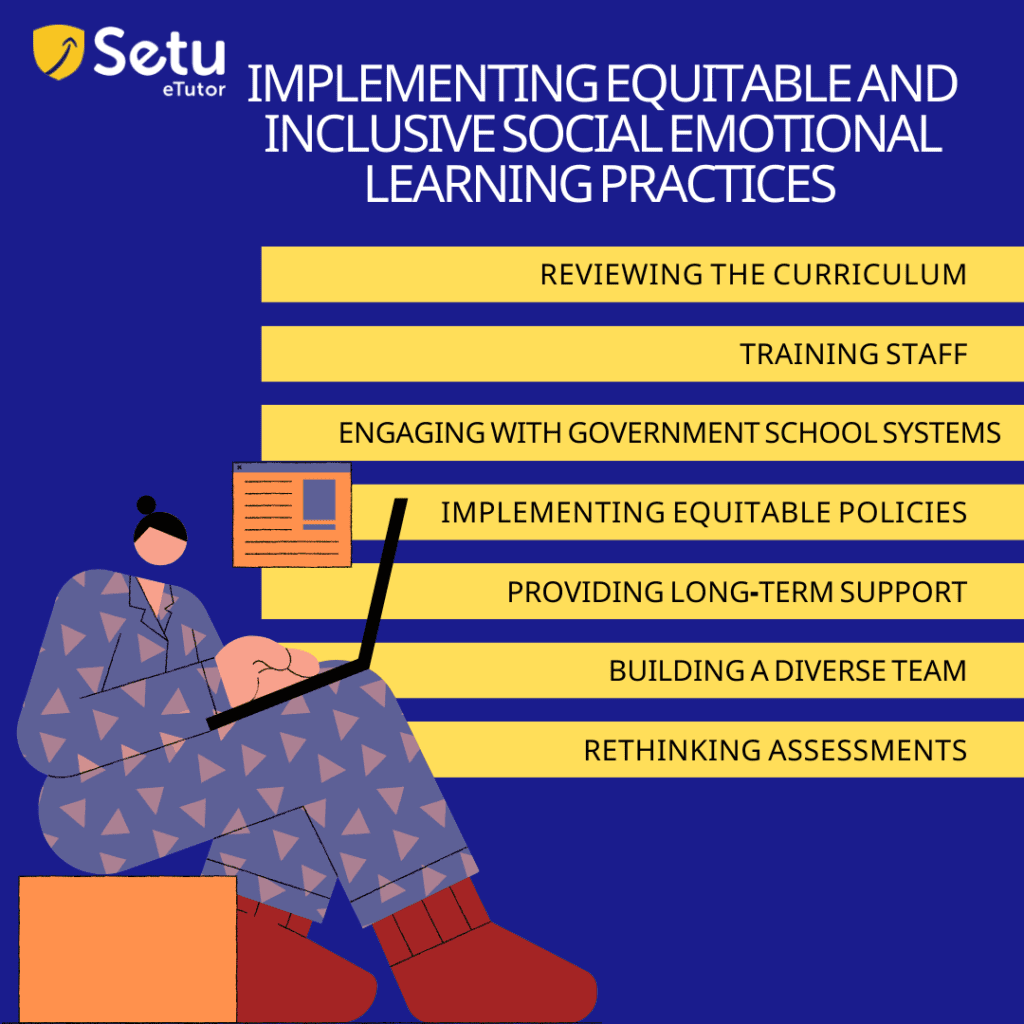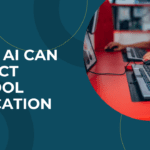Table of contents
Recently, a diverse range of stakeholders in India, including researchers, educators, employers, and parents, have recognized the significance of Social Emotional Learning (SEL) skills and non-academic abilities in the lives of young individuals.
The Covid-19 pandemic has further emphasized the importance of SEL as adults and young people worldwide reported increased levels of stress, anxiety, and depression. This crisis has highlighted the value of SEL in supporting emotional well-being and Mental Health.
Consequently, there is a renewed focus on integrating SEL into education systems, policies, and practices to address the holistic needs of learners and equip them with the skills to navigate challenges, build resilience, and maintain overall well-being.
In this blog post we will discuss about social emotional learning in National Education and how to implement equitable and inclusive SEL Practices
NEP supports Social Emotional Learning :
National Education Policy (NEP) 2020, a comprehensive framework for transforming the education system in India, recognizes the importance of social emotional learning (SEL) and includes it in the curriculum.
- The NEP emphasizes the holistic development of students and acknowledges the significance of their social and emotional well-being alongside academic achievement.
- It promotes integrating social emotional learning practices and skills within the curriculum and classroom activities to Nurture Students‘ social and emotional competencies.
- By incorporating SEL, the NEP aims to foster a positive and inclusive social emotional learning environment that supports students in developing empathy, self-awareness, emotional regulation, and interpersonal skills.
- This integration of social emotional learning in the NEP reflects a broader understanding of education that goes beyond academic knowledge and prioritizes students’ overall growth and well-being.
The Impact and Limitations of Social Emotional Learning Programs in Addressing Inequities:

- The Positive Effects of social emotional learning Programs: Evidence shows that SEL programs have yielded positive outcomes for young people, especially those from marginalized backgrounds. Despite challenging social circumstances, improved life skills such as interpersonal interaction, problem-solving, and resilience have been observed in participants.
- The Perturbing Aspect of Social Emotional Learning Programs: The concern lies in placing the burden of improvement solely on the young person, disregarding the systemic inequalities and discrimination they may face. For instance, a marginalized child experiencing religious bullying may be advised to “become confident” or “take leadership” without considering their lived reality, further eroding their self-esteem.
- The Need for Systemic Change: while valuable, social emotional learning interventions cannot operate in isolation. The entire education system must overcome systemic barriers rooted in caste, class, religion, social status, and gender. Achieving inclusivity requires a shift in mindsets among educators, school leaders, and parents and changes in curriculum and assessment types.
- Moving Towards Inclusivity: To create an inclusive education system, we must address systemic inequities and biases. It necessitates transforming the mindset and practices of all stakeholders involved and revising curriculum content and assessment methods. We can work towards a more equitable and inclusive educational experience for all by recognizing and dismantling the barriers that hold young people back.
Embracing an Intersectional Lens in SEL Programs:
As social emotional learning (SEL) gains momentum in India, addressing the systemic barriers that impact young people based on their social identities is crucial. An intersectional lens prompts us to ask tough questions and consider how SEL programs can support marginalized students within the education system.
We must recognize how intersecting identities contribute to discrimination and oppression in educational spaces. social emotional learning programs should empower students to unpack these complexities and develop a critical understanding of the impact of their identities.
Furthermore, educators and facilitators need to confront their own biases and privileges. By acknowledging our intersecting identities and understanding how they influence our teaching, we can create inclusive environments that address the needs of marginalized children.
One example is caste-based exclusion, where offering marginalized students a new last name/surname can help them overcome systemic discrimination. This intervention by Dr. Praveen Kumar in Telangana fostered a sense of self-confidence and challenged the oppressive caste identities imposed on the students.
Recognizing and Embracing Their Role in the Education Ecosystem:
Educators, administrators, and individuals working within the education ecosystem must understand and acknowledge their role in promoting social emotional learning (SEL) and fostering an inclusive environment. It requires self-reflection and a deep understanding of our intersecting identities and privileges.
By examining our privileges, we can understand how they contribute to systemic discrimination and inequities. This awareness allows us to challenge and dismantle these barriers within our classrooms and schools. For example, acknowledging caste-based exclusion and taking proactive steps to address it, like offering new surnames to marginalized students, can help create a more inclusive and empowering learning environment.
Furthermore, understanding the lived experiences of marginalized children is essential. It requires listening to their stories, learning about their challenges, and recognizing the impact of systemic discrimination on their education. By doing so, we can better understand their needs and tailor our approaches to support their holistic development.
An intersectional lens helps us approach SEL with an equity-centered mindset. It enables us to affirm and validate the diverse experiences of young people rather than perpetuating the discriminatory practices that marginalize them. We must actively challenge bias, privilege, and harmful stereotypes that hinder inclusive education.
By embracing our role in the education ecosystem and cultivating an intersectional perspective, we can create a more just and equitable learning environment. Through continuous self-reflection, learning, and advocacy, we can work towards dismantling systemic barriers, empowering marginalized students, and fostering an inclusive educational experience for all.
Implementing Equitable and Inclusive Social Emotional Learning Practices

To create a truly equitable and inclusive social emotional learning (SEL) program, organizations can take several initial steps:
- Reviewing the curriculum: Organizations should critically examine the existing SEL curriculum to ensure it avoids reinforcing stereotypes and represents diverse communities and lived realities. Activities should be flexible and inclusive to accommodate all children.
- Training staff: SEL facilitators need the training to understand how intersecting identities influence interactions with young people. Workshops on gender sensitization, the impact of the caste system, and self-reflection activities can help develop an awareness of privilege and discrimination.
- Rethinking assessments: Assessments should focus on measuring progress and growth rather than comparing children against normative benchmarks. Adverse circumstances and social marginalization may require alternative assessment approaches recognizing individual improvements.
- Building a diverse team: It is crucial to have a diverse group representing the communities the organization serves. Consider the intersecting identities of team members and prioritize diversity and inclusion to provide diverse perspectives and experiences.
- Implementing equitable policies: Policies should address the unique challenges faced by team members from marginalized backgrounds. Fair performance evaluation and benefits systems should be in place, promoting equitable growth opportunities.
- Providing long-term support: SEL programs should continue supporting young people beyond the program duration, helping them navigate systemic discrimination as they transition into adulthood.
- Engaging with government school systems: Collaboration with government schools, where marginalized children are predominantly enrolled, is vital. Investing in developing capacities and understanding within the public system is essential for a more equitable and inclusive education system.
By incorporating these practices, Social emotional learning programs can make significant strides toward fostering equity and inclusivity, positively impacting the lives of young people from marginalized backgrounds.
Conclusion:
Focusing on SEL, schools, and communities can support the holistic education of students and prepare them to navigate the complexities of the modern world. SETU, a technology-enabled platform, recognizes the importance of SEL in the holistic development of students and creates a comprehensive framework that incorporates SEL principles into the education system.
It involves developing appropriate assessment tools and techniques to measure students’ SEL competency progress. This data helps inform educational policies and practices and ensures that SEL remains an integral part of the education system.
To know how our AI-assisted platform SETU helps in measuring the SEL, contact us here.










Leave a reply